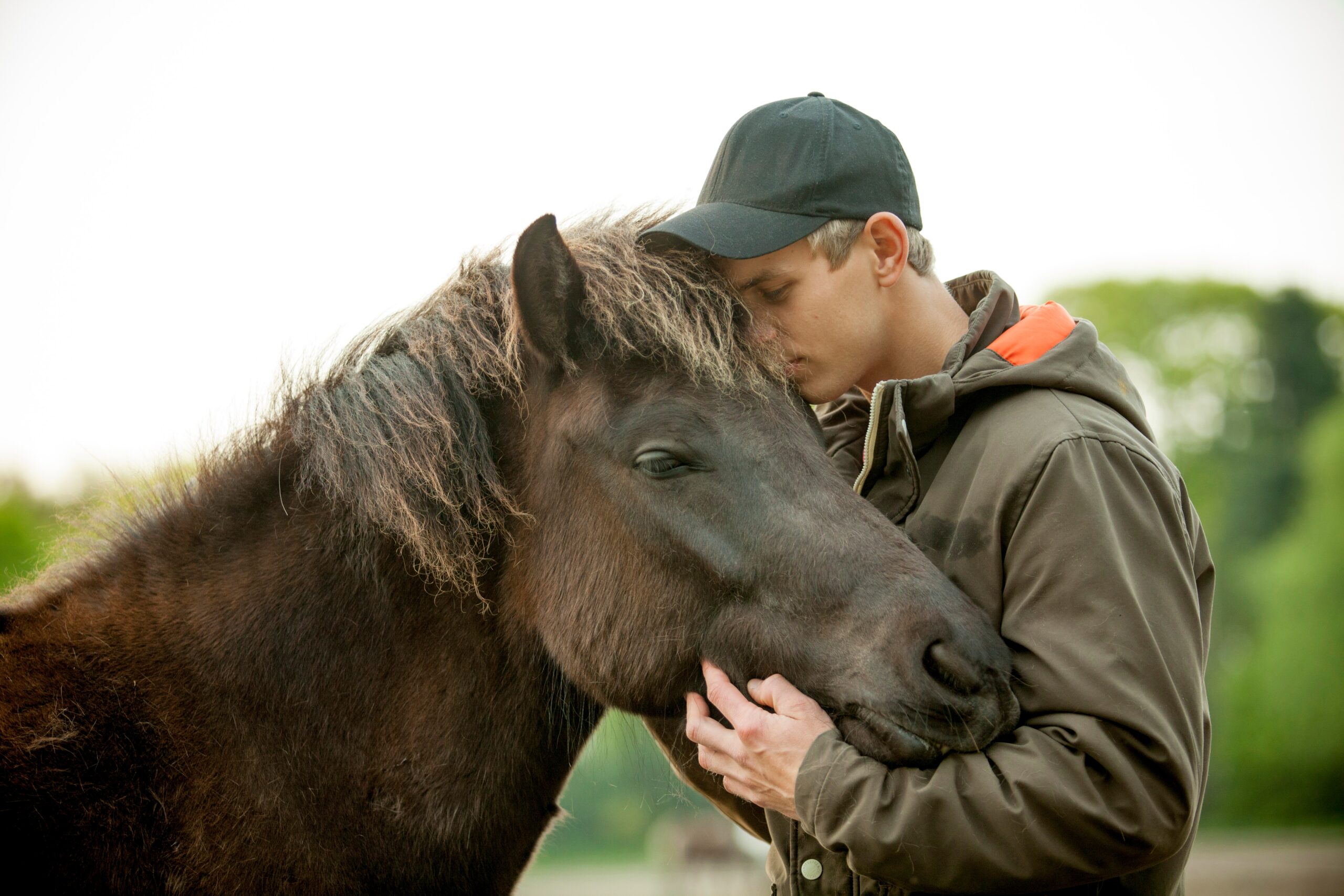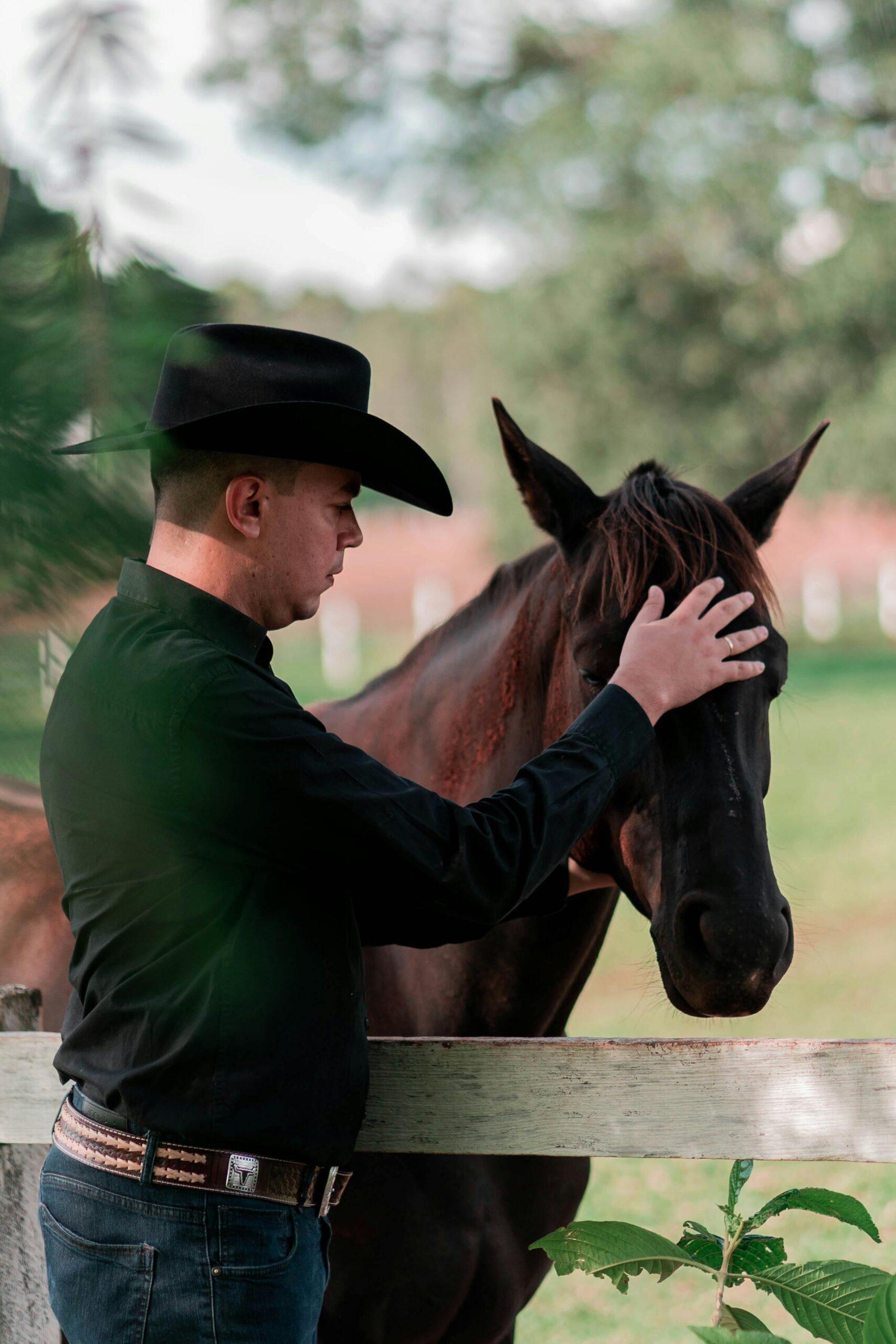What You Need to Know About Equine-Assisted Psychotherapy
Horses have been partners in human life for centuries, but their role in equine-assisted psychotherapy extends far beyond riding or recreation. This unique therapeutic approach leverages horses’ sensitivity to human emotions, helping individuals work through mental, emotional, and physical challenges. In this blog, we’ll look at some psychotherapy facts and why it’s becoming such a popular alternative.
From improving communication skills to enhancing emotional regulation, equine-assisted therapy offers benefits for a wide range of people, including those dealing with trauma, anxiety, and physical disabilities. For mental health professionals and equine specialists, equine-assisted therapy presents a powerful way to foster growth, healing, and self-awareness.
Whether through structured therapy sessions, therapeutic riding programs, or equine-assisted learning exercises, the presence of a horse creates a dynamic environment for transformation. Let’s explore the scientific evidence behind equine-assisted therapy, its different forms, and the key benefits of equine therapy, including emotional, cognitive, and physical improvements. If you’re interested in incorporating equine therapy into your practice, this guide will provide essential insights.
What Is Equine-Assisted Therapy?
Equine-assisted therapy refers to structured therapeutic interactions with horses to support mental, emotional, and physical well-being. Unlike traditional talk therapy, equine-assisted therapy is experiential—meaning clients engage in hands-on activities with horses, allowing them to process emotions and behaviors in real time.
A mental health professional and an equine specialist work together to guide clients through therapy sessions, helping them interpret the horses’ responses and apply those insights to their own lives. Because horses react instinctively to human emotions and behaviors, they serve as honest, nonjudgmental partners in the therapeutic process.
Equine-assisted psychotherapy (EAP) is one of the most well-known forms of equine therapy, specifically designed to address mental health conditions such as PTSD, depression, and anxiety. However, equine-assisted therapy is a broad field with many different applications.
The Science Behind Equine Therapy

The effectiveness of equine-assisted psychotherapy is supported by scientific evidence demonstrating its benefits for both mental and physical health. Studies have shown that interacting with horses can lower cortisol (the stress hormone), regulate heart rate, and promote relaxation.
For individuals with trauma, equine-assisted psychotherapy (EAP) can help build trust, emotional awareness, and coping strategies in a safe, non-verbal environment. By working with horses, clients develop mindfulness, patience, and confidence—all of which contribute to long-term mental health improvements.
Physical benefits are also well-documented. Riding and caring for horses can strengthen core muscles, improve balance, and increase coordination. Organizations like Equine Assisted Growth and Learning Association (Eagala) and the Professional Association of Therapeutic Horsemanship International (PATH), formally The North American Riding for the Handicapped Association, support these efforts by setting high standards for therapeutic riding programs that cater to individuals with physical and cognitive disabilities.
Types of Equine-Assisted Therapy
Equine therapy can take many forms, and equine-assisted growth can have many different looks as each is tailored to different needs. The most common therapies include:
- Equine-Assisted Psychotherapy (EAP)
- Equine-Assisted Learning
- Therapeutic Riding
- Groundwork Therapy
- Hippotherapy
1. Equine-Assisted Psychotherapy (EAP)
This therapy focuses on assisted growth and learning in a mental health setting. Clients engage in activities such as leading, grooming, or observing horses, with guidance from a mental health professional and an equine specialist. The goal is to address emotional regulation, trauma recovery, and personal development.
2. Equine-Assisted Learning
Unlike equine-assisted psychotherapy (EAP), this approach is not strictly for mental health conditions. Instead, it helps participants develop communication, leadership, and teamwork skills through hands-on horseback riding, grooming, and groundwork exercises.
3. Therapeutic Riding
Benefits of therapeutic riding include improved motor skills, balance, and muscle strength. These riding programs are often used for individuals with disabilities and are supervised by trained riding instructors. Riding also provides sensory stimulation, making it a valuable tool for children and adults with neurological conditions.
4. Groundwork Therapy
Not all equine-assisted therapy involves riding a horse. Many therapy sessions focus on groundwork activities such as grooming, feeding, and leading horses. These activities foster connection and responsibility while building confidence and trust.
5. Hippotherapy
Hippotherapy is a specialized form of therapy that uses the movement of a horse as part of a treatment plan led by a licensed physical, occupational, or speech therapist. Hippotherapy is a medically-based intervention designed to improve balance, coordination, strength, and sensory processing. The rhythmic, multi-dimensional movement of the horse provides unique neuromuscular stimulation that can help individuals with conditions such as cerebral palsy, autism, stroke recovery, and other motor or sensory impairments.
Key Benefits of Equine Therapy
The benefits of equine therapy include improvements in mental, emotional, and physical well-being.
Mental and Emotional Benefits
- Emotional Regulation – Horses provide immediate feedback, helping clients recognize and manage their emotions.
- Increased Self-Awareness – Observing how a horse responds to body language and energy allows clients to reflect on their behaviors.
- Stress and Anxiety Reduction – Interacting with horses lowers stress hormones and promotes a sense of calm.
Cognitive and Social Benefits
- Improved Communication Skills – Clients learn to communicate through nonverbal cues and clear intent.
- Enhanced Problem-Solving – Activities like obstacle courses encourage strategic thinking and adaptability.
- Stronger Social Connections – Working with horses can help individuals develop trust and cooperation with others.
Physical and Occupational Benefits
- Balance and Coordination – Activities like riding a horse help strengthen core muscles.
- Motor Skill Development – Grooming and leading a horse improves fine and gross motor skills.
- Sensory Stimulation – The movement of a horse provides therapeutic benefits for individuals with sensory processing disorders.
Who Can Benefit from Equine-Assisted Therapy?
Equine-assisted therapy is for anyone looking to improve their emotional, mental, or physical well-being. Because horses are sensitive to human emotions and body language, they provide a powerful way for people to work through challenges in a supportive, non-judgmental environment.
Whether someone is dealing with stress, trauma, or physical limitations, working with horses can be a transformative experience. Here are some groups that can especially benefit from equine-assisted therapy:

People with Anxiety or PTSD – Horses help individuals stay present, regulate emotions, and build confidence in a calm, structured setting. Their natural responses to human behavior provide immediate feedback, helping people learn to manage stress and anxiety.
Children with Autism or ADHD – Interacting with horses improves focus, patience, and social skills. Because horses communicate primarily through body language, they help children with autism or ADHD develop better awareness of their own emotions and how to interact with others.
Individuals with Physical Disabilities – Activities like riding a horse or leading a horse on the ground can help strengthen muscles, improve balance, and increase coordination. The movement of a horse mimics the natural motion of walking, making it an excellent tool for people with mobility challenges.
Trauma Survivors – Many people who have experienced trauma find it difficult to put their feelings into words. Horses offer a non-verbal way to process emotions, providing comfort and connection without pressure to talk. Through guided activities, individuals can work on rebuilding trust, setting boundaries, and developing coping skills.
Veterans and First Responders – Equine-assisted therapy provides a safe space for emotional healing, stress relief, and reintegration into daily life. The structured but low-pressure nature of working with horses can help veterans and first responders regain a sense of control and purpose.
Whether through groundwork exercises like grooming and leading, or therapeutic riding sessions, equine therapy offers a hands-on, engaging way for people to heal and grow. It is a unique and effective approach that meets individuals where they are, offering connection, insight, and physical benefits in a way that traditional therapy settings sometimes cannot.
Getting Involved with Equine Therapy
If you’re interested in participating in or facilitating equine-assisted therapy, there are several ways to get involved:
- Find a Certified Riding Center – Look for programs that adhere to professional standards.
- Become a Certified Professional – Eagala offers training and certification for mental health professionals and equine specialists.
- Attend an Equine Therapy Event – Gain hands-on experience through workshops and training programs.
Eagala is a leader in equine-assisted psychotherapy, offering training for professionals who want to incorporate horses into therapy.
Horse Therapy Facts FAQs
What is the difference between equine-assisted therapy and therapeutic riding/hippotherapy?
Equine-assisted therapy focuses on mental health and personal development, while therapeutic riding programs are designed for physical rehabilitation and sensory stimulation.
How does scientific evidence support equine therapy?
Studies show that interacting with horses reduces stress, improves emotional regulation, and enhances motor skills, making it a valuable therapeutic tool.
Can anyone participate in riding programs at a riding center?
Many riding centers offer specialized programs, but eligibility depends on an individual’s needs and the program’s focus.
What are the primary benefits of equine therapy?
The benefits of equine therapy include improved emotional well-being, enhanced social skills, and increased physical strength and coordination.
Do therapists need special training to offer equine-assisted psychotherapy (EAP)?
Yes, professionals need specific certification and training to facilitate equine-assisted psychotherapy (EAP) safely and effectively. This can be done through Eagala certification training.
How do horses help with mental health issues?
Horses reflect human emotions, helping clients recognize patterns in their thoughts and behaviors while providing a calming, grounding presence.
Take the Next Step—Enroll in an Eagala Event!
If you’re a mental health professional or equine specialist looking to expand your skills, Eagala offers hands-on training to help you integrate equine-assisted therapy into your practice.
Join an upcoming event to learn from experienced professionals, get hands-on experience in equine-facilitated therapy, and explore how horses can support mental health treatment and bolster your credentials. Visit our training/events page to register for an upcoming training event and start your journey toward certification!


